Well, we’ve been talking about the likelihood of the Fed raising interest rates now for some time. This past week, Chairwoman Yellen did so, simultaneously noting the Fed likely will follow with at least two additional increases later this year. She stressed that the increases will not be ‘sledgehammers, but, instead, be moderate increases.
What Do Higher Rates Mean for the Housing Market?
The Fed’s interest rate increase is a double-edged sword: The move signals confidence in continuedjob growth but also means higher borrowing costs, which lowers housing affordability. And in the Bay Area, where housing affordability is already a serious issue, further eroding affordability does not bode well for homebuyers using mortgage financing to purchase a home.
At Pacific Union’s Real Estate and Economic Forecast to 2019 last November, John Burns Real Estate Consulting offered some estimates of the impact of rising mortgage rates on the Bay Area’s housing market. Figure 1 shows the change in the number of households who can qualify for a $1 million mortgage at rates ranging from 3 percent to 6 percent. At 4 percent, about 643,000 households qualify for a $1 million mortgage, while the number of households drops to about 519,000 when rates hit 5 percent. In other words, about 124,000 households — or 5 percent fewer — Bay Area homebuyers will qualify at the higher mortgage rate. Also, the minimum income required increases by $19,000 to $224,000, and the mortgage payment — not including taxes and insurance – rises by 12 percent, to $5,368.
However, in addition to fewer households qualifying for mortgages at higher interest rates, an increase in mortgage rates can constrain housing markets in other ways, all of which translate into fewer homes being sold.
Figure 1: Source: John Burns Real Estate Consulting, LLC
Recent historically low mortgage rates have allowed many homeowners to refinance with more favorable rates and terms. But as rates move higher, the incentive to sell is not as strong. Based on a CoreLogic analysis presented at the Sunset Seminar, only 11 percent of active mortgage balances have rates at 4.25 percent plus 100 basis points, which would incentivize owners to refinance their mortgage balances. Also, one in five of those borrowers is in default, leaving only about 9 percent with the incentive to refinance. In the Bay Area, about 1.2 million of 1.68 million owner-occupied housing units have a mortgage.
Additionally, as payment rates increase, the share of existing owners who will sell their homes also declines. For example, based on CoreLogic data, when rates fall by 1.5 percentage points, the share of home sellers who sold their home after 10 years of owning increased from 3 percent to 5 percent.
An increase in mortgage rates could lead to a further tightening of the inventory of homes on the market and may constrain sales activity. So, if you are a Seller, the increase(s) could also affect your plans.
Need assistance either as a Buyer or Seller, call us! We’d be pleased to help! Peter: (415) 279-6466; Jane: (415) 531-4091.
